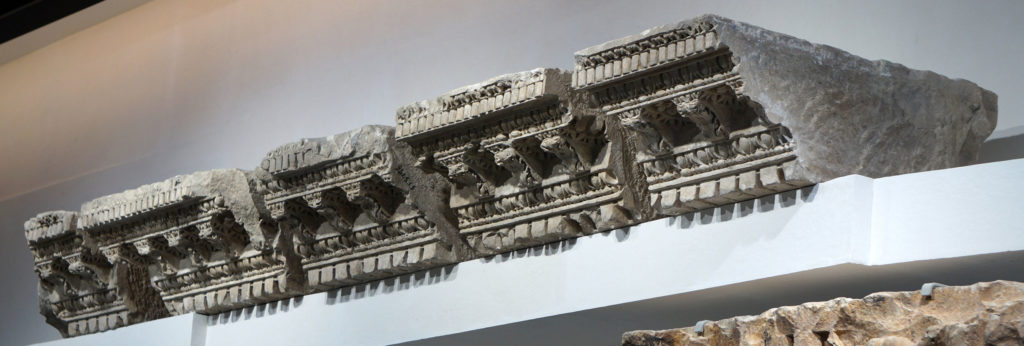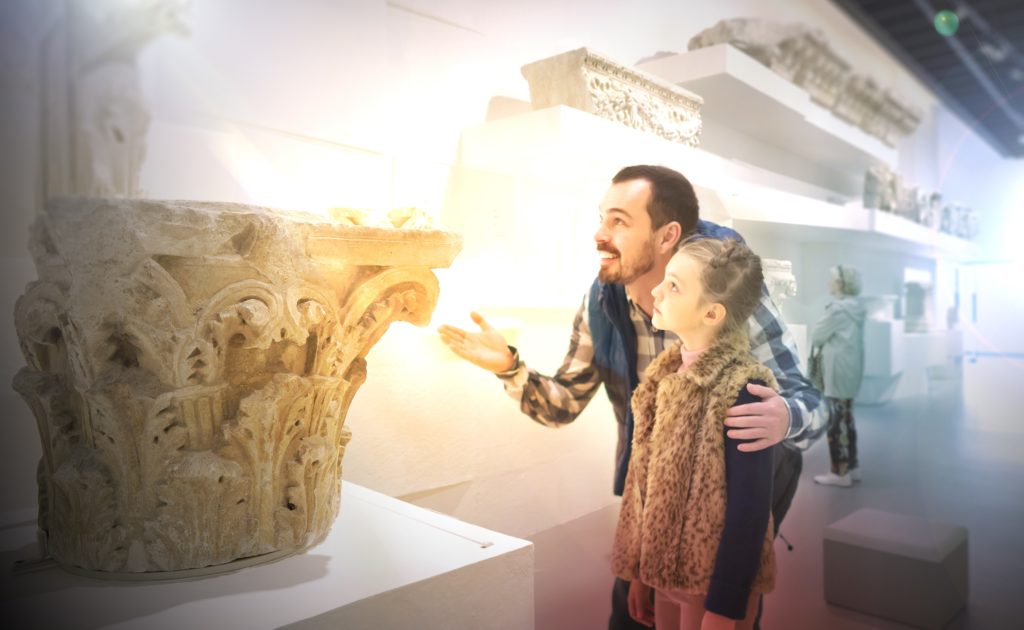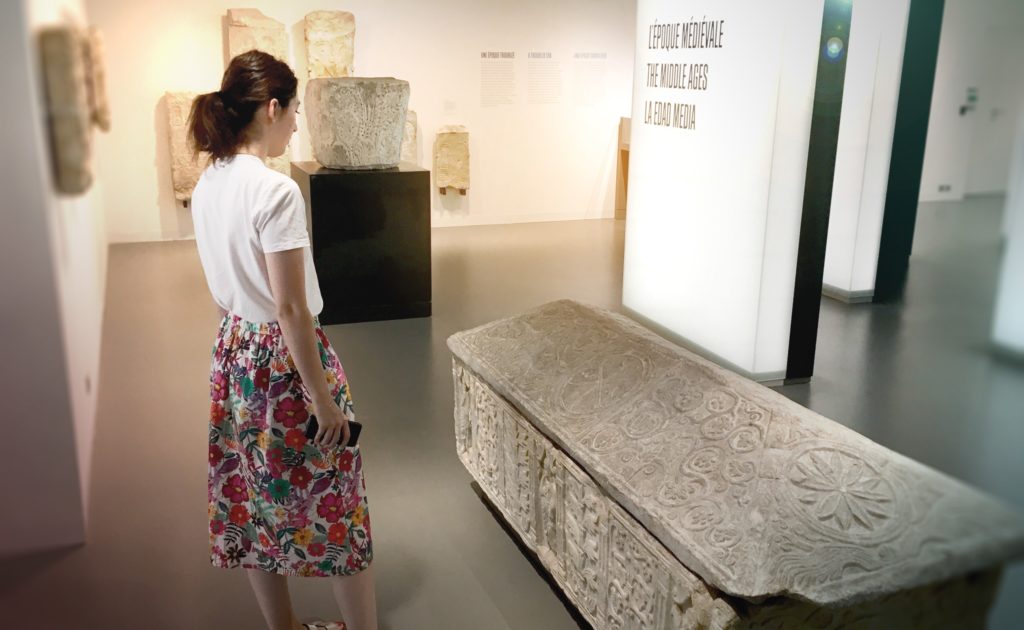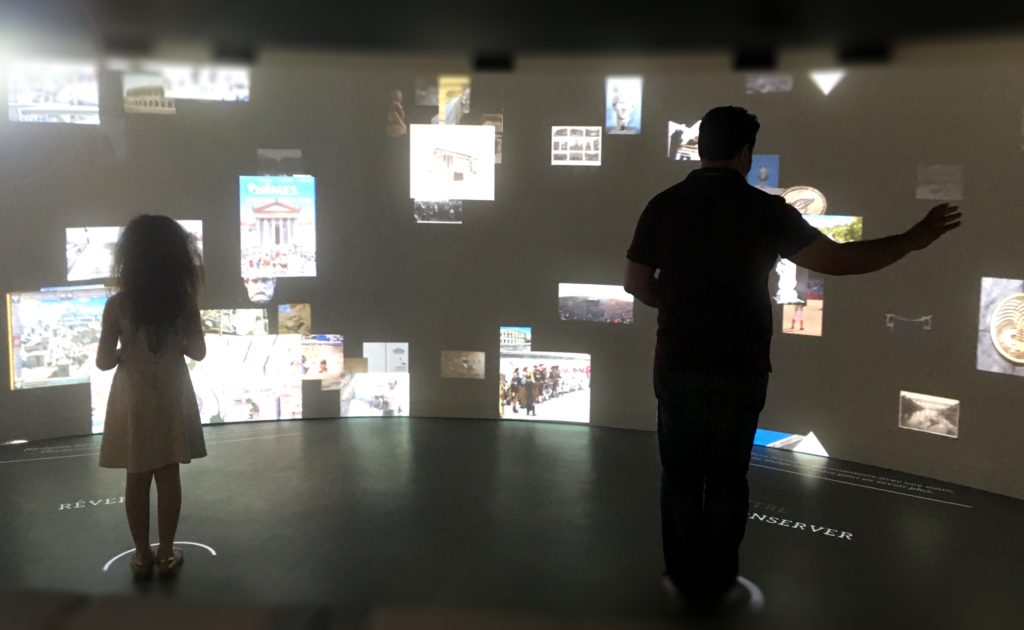Sommaire :
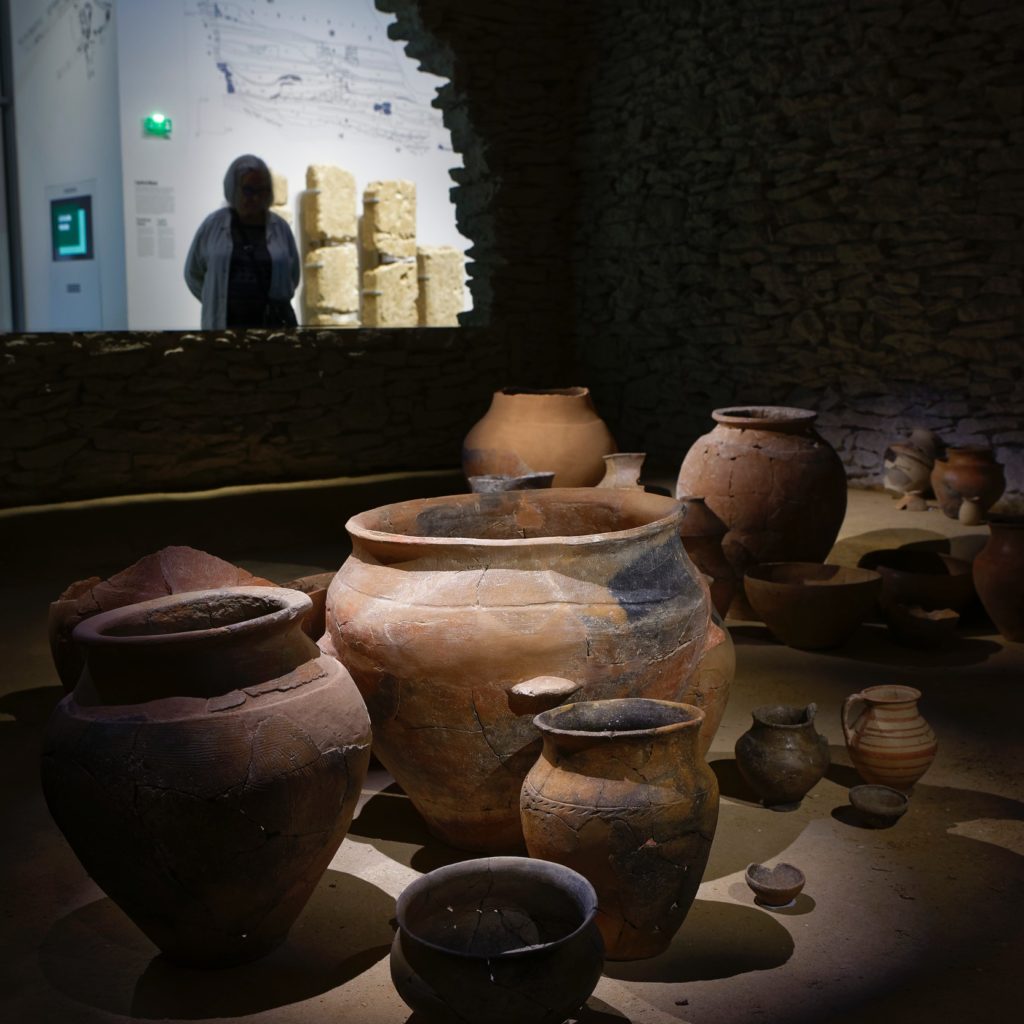
The everyday life
See the everyday life of the Volcae Arecomici, who had already settled at the spring, through a reference to Gallic warriors. Enter a full reconstitution of a Gallic house, like the one found at the Gailhan archaeological site. Large mobile screens take you back to the time when it was inhabited.
Then go along the Via Domitia. The main road route built by the Romans from Italy to Spain was marked by milestones showing the distance travelled and also used as supports for propaganda for the emperors. In the Ancient Roman period, burial grounds were outside towns, along roads. The change in the contents of tombs reveals little by little the growing influence of ‘Romanicity’ and the first Gallo-Greek inscriptions on stelae. Can you use a few keys and decipher them?
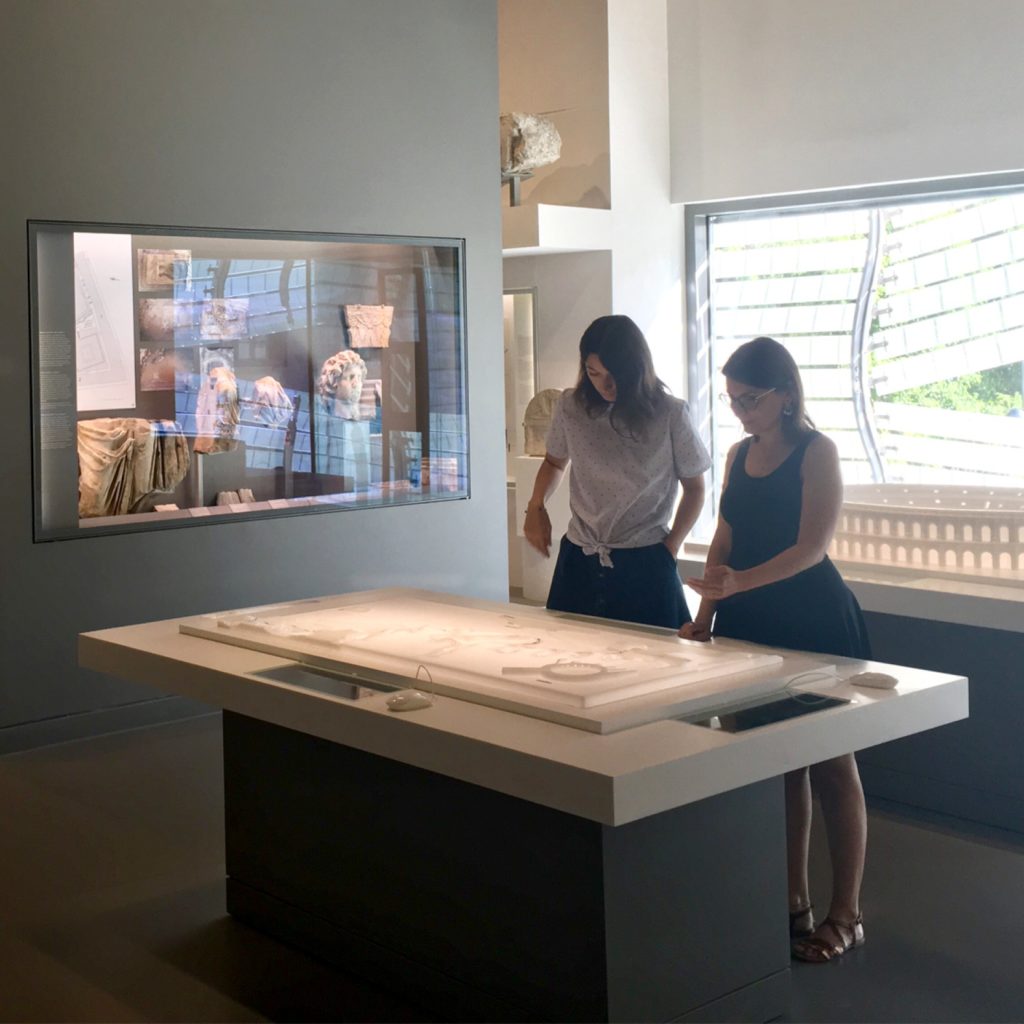
Town planning
Visit the town and its area during the Roman period and see the way it developed—thanks to scientific research. You will find screen displays, interactive maps and mobile screens concerning the Arena. Walk in the traces of the magnificent monuments in Nîmes inherited from the Roman civilisation and in an excellent state of conservation.
Friezes, cornices and capitals show the secrets of constructions methods, of the quarryman’s trade and lead you to dream, impressed by the richness of the decors.
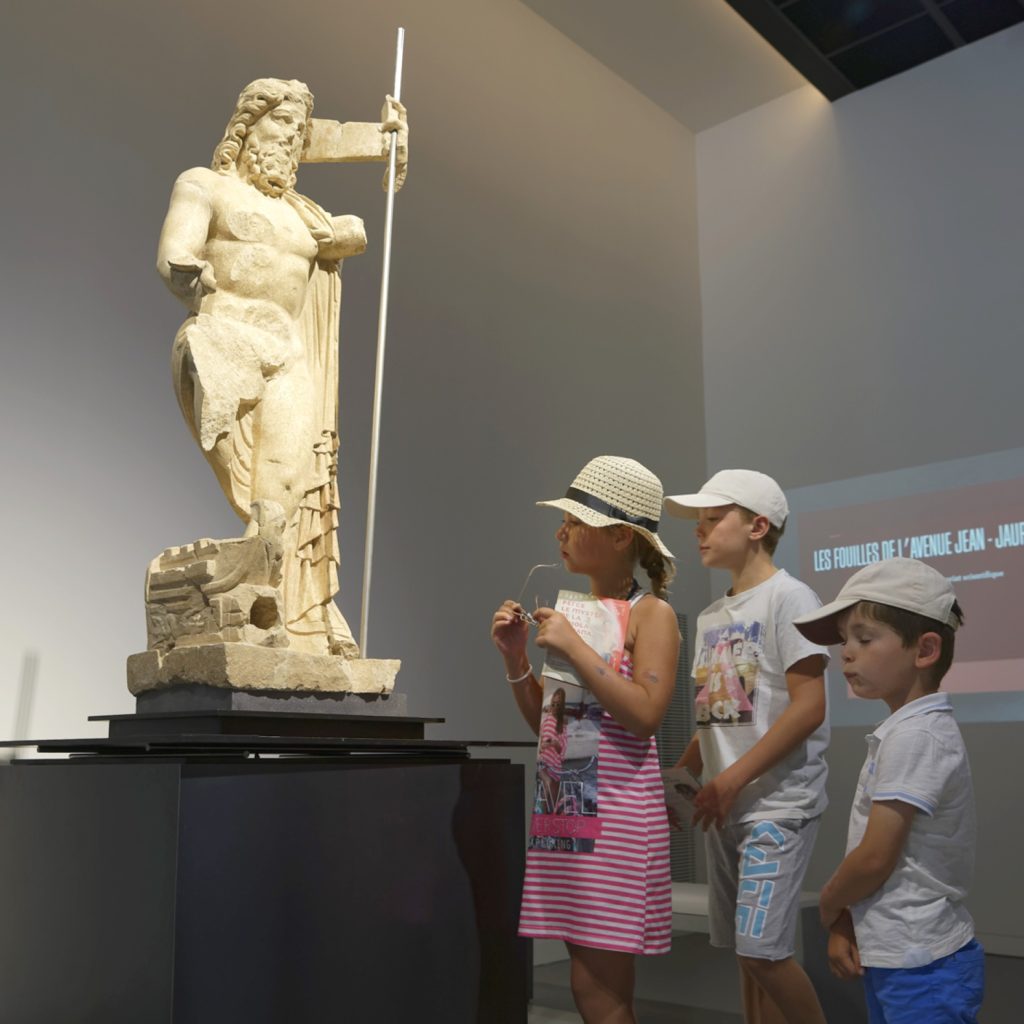
Housing and private decoration
Examine the rooms inside rich Roman residences found during recent archaeological discoveries. Their original decorative components have been reconstituted to show their original atmosphere.
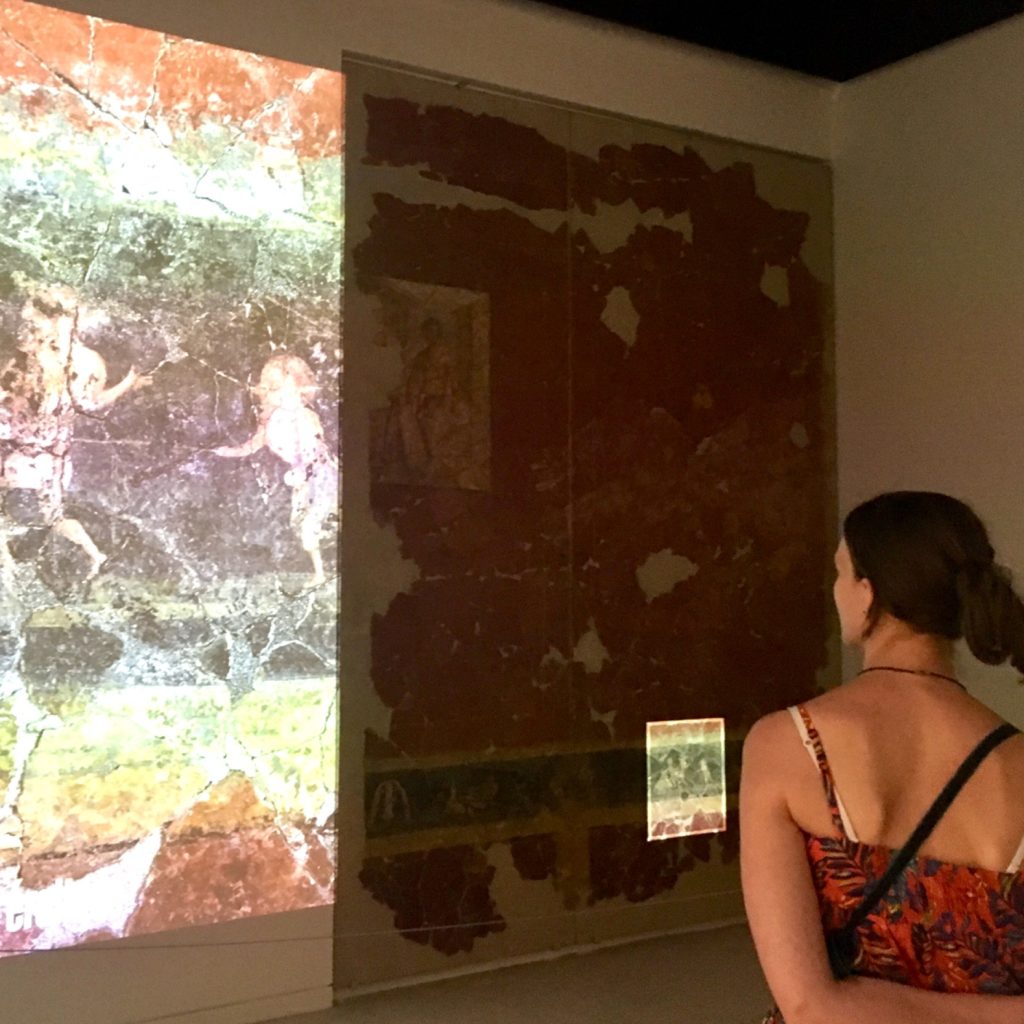
Reconstitution of the domusVilla Roma
Respecting the volumes of the time, the room has been reconstituted with its wall fresco whose missing elements are shown by projection. Redrawn and underlined, the details recorded say much about Roman choices in decoration.
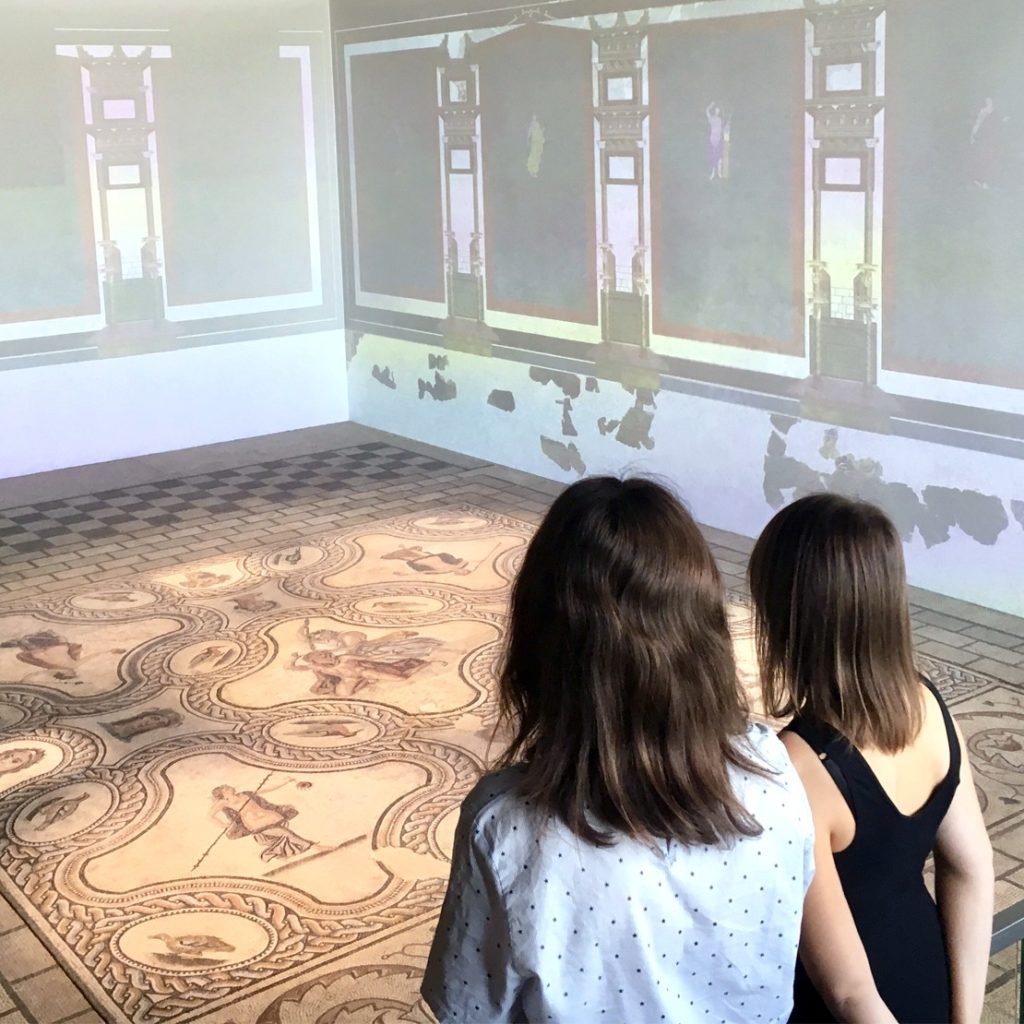
The Pentheus mosaic
Imagine that you are a Roman invited to a luxurious villa whose central feature is the Pentheus mosaic. Found in a remarkable state of conservation during an archaeological dig in Nîmes in 2007, it has come back to life thanks to projections showing its décor. Follow the story of the tragic mythological scene shown in the central medallion.
Continue your visit towards the mezzanine and see a cubiculum (or bedroom). Its mosaic has its coloured well decoration and furniture once again. Admire the numerous delicately patterned mosaics laid on the floor or on the garden façade wall to see them from a distance, and pause to contemplate the Bellerophon mosaic made entirely of marble cubes and laid on a sloping surface.

Epigraphy
The exceptional collection of honorary, religious and funerary inscriptions comes to life before your eyes. Thank to projections, decipher on the stelae the touching life stories of the men and women who lived there nearly 2000 years ago.
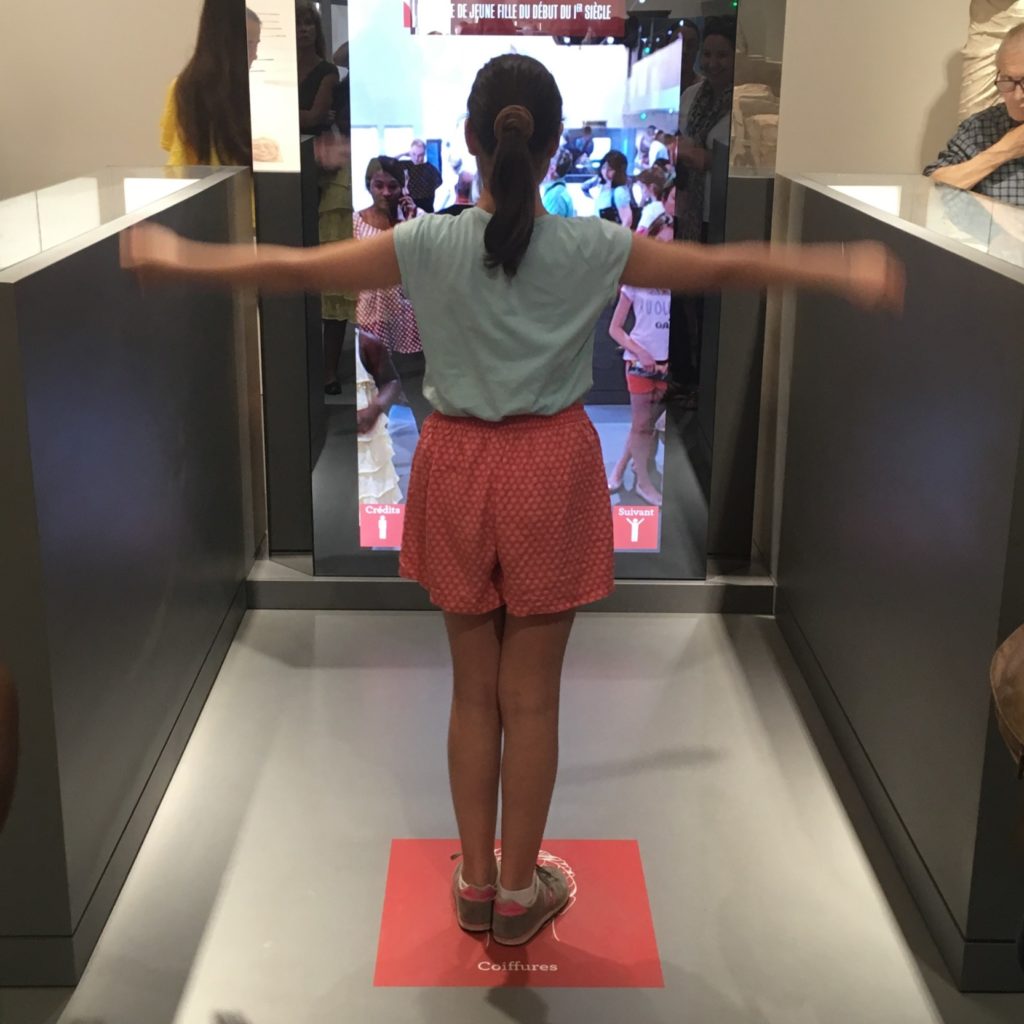
Everyday life
Experiencing the Roman period also means seeing trades, food, ceramics, toys and even Roman fashion that you can try (thanks to augmented reality). Become an archaeologist and run a programme of excavations. The results of your research will enable you to reconstitute a Roman recipe. Examine the large range of currency and thus trace the Roman imperial dynasties by means of the coins bearing effigies of the emperors.

Religions and the world of the dead
Follow the ‘tunnel of religions’ and learn about the numerous Roman deities and those of the local populations. The classic pantheon consisting of Jupiter, Bacchus, Mercury, Venus and Apollo is seen with oriental deities like Isis and Serapis and Gallic gods such as Nemausus and Sucellus. The imperial cult—a duty in provincial towns—is represented by portraits of emperors. After the tunnel, see tombs also found during recent archaeological digs. They show the evolution of funeral rites as time went by.
The Late Antiquity period then takes you towards the Middle Ages, with the magnificent Valbonne sarcophagus and a series of Visigothic stelae (5th-8th centuries AD).
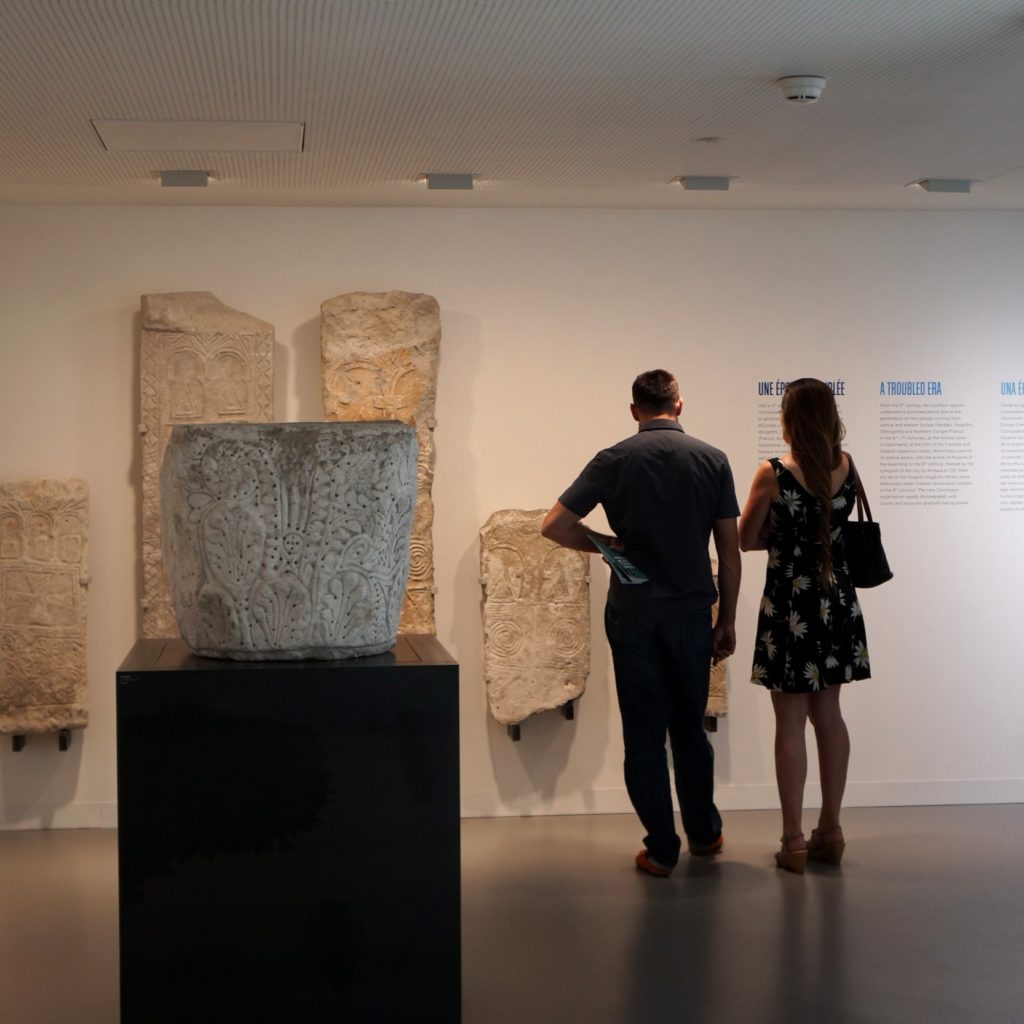
The Romanesque period
(10th to early 12th centuries)
Capitals, cornices and reliefs: imaginary bestiaries, biblical images and Roman influences take the visitor into the Medieval imaginary world.
The Gothic periode
(13th to 15th centuries)
The Roman amphitheatre had been turned into a residential area in the Middle Ages. When the houses were demolished (1786-1809) a private individual recovered a series of 14th-century blocks from the Church of St-Martin des Arènes, with carvings mingling secular and religious inspiration.
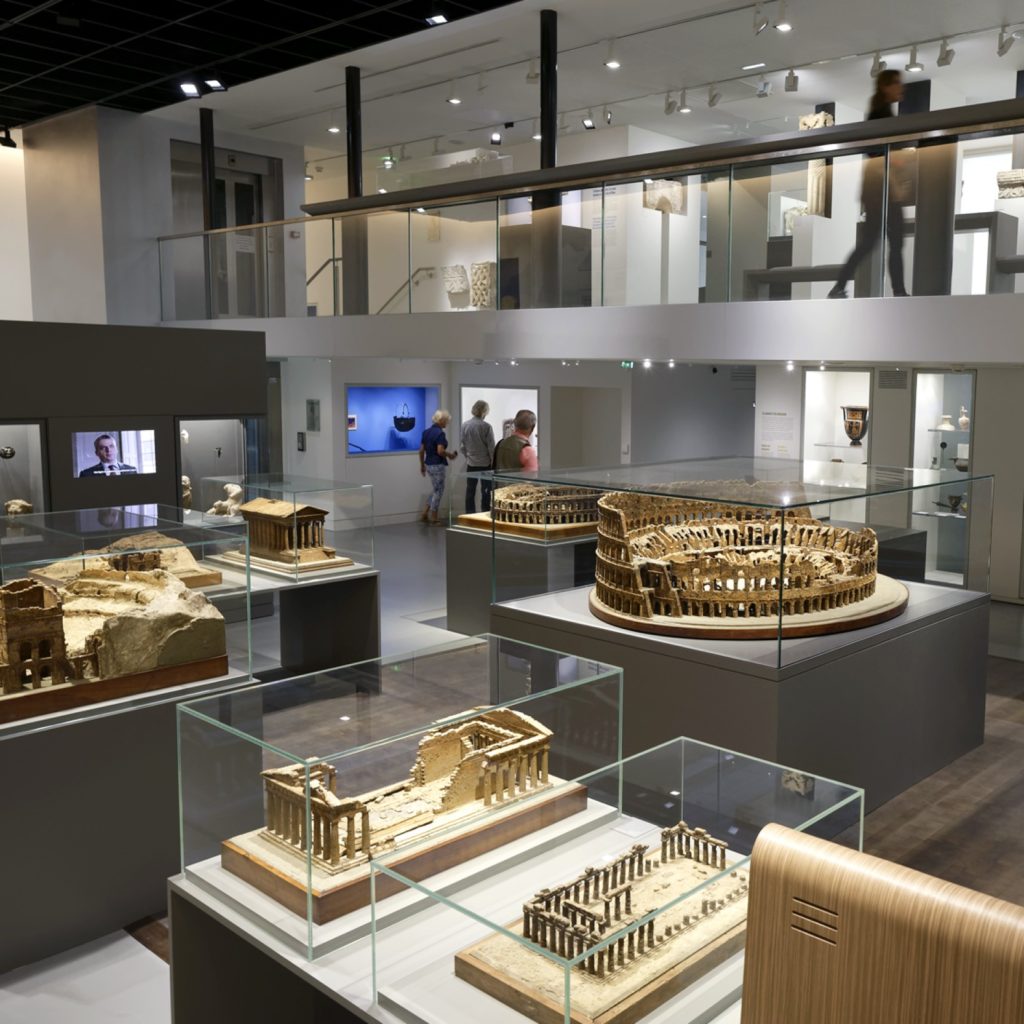
A unique testimony
At the heart of the collections passed on by scholars and collectors in Nîmes, see the 1:100 scale miniature versions of the great Roman monuments made in cork by Auguste Pelet that were displayed at the Universal Exhibition of 1839. Extremely accurate, they form a unique view of the appearance of the monuments in the early 19th century.
To finish, choose among various audio-visual extracts and control your own viewing on a large screen to set up your contemporary panorama of references to ‘Romanity’ (Kinect technology).
